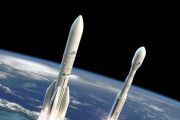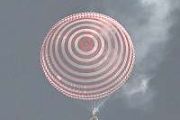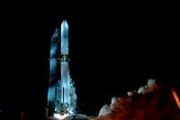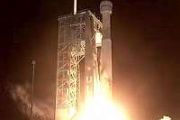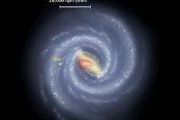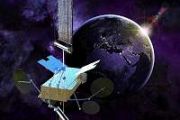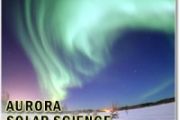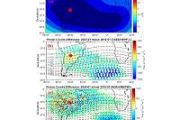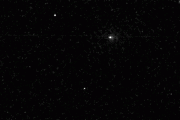
Copernical Team
Starship: Unpacking the Complexities of SpaceX's Two-Stage Vision
 SpaceX's Starship program stands as one of the most ambitious endeavors in the history of space exploration. Envisioned as a fully reusable spacecraft capable of carrying humans and cargo to destinations such as the Moon, Mars, and beyond, Starship represents a significant leap in space travel technology. However, the journey to achieving this vision is far from straightforward, and the technica
SpaceX's Starship program stands as one of the most ambitious endeavors in the history of space exploration. Envisioned as a fully reusable spacecraft capable of carrying humans and cargo to destinations such as the Moon, Mars, and beyond, Starship represents a significant leap in space travel technology. However, the journey to achieving this vision is far from straightforward, and the technica Webb data suggests our model of the universe may hold up after all
 We know many things about our universe, but astronomers are still debating exactly how fast it is expanding. In fact, over the past two decades, two major ways to measure this number - known as the "Hubble constant" - have come up with different answers, leading some to wonder if there was something missing from our model of how the universe works.
But new measurements from the powerful Ja
We know many things about our universe, but astronomers are still debating exactly how fast it is expanding. In fact, over the past two decades, two major ways to measure this number - known as the "Hubble constant" - have come up with different answers, leading some to wonder if there was something missing from our model of how the universe works.
But new measurements from the powerful Ja Carbon Mapper Coalition launches Tanager-1 to track methane and CO2
 The Carbon Mapper Coalition has launched its inaugural satellite, Tanager-1, aboard the SpaceX Transporter-11 Rideshare mission. Developed by Planet Labs (NYSE: PL) in collaboration with NASA's Jet Propulsion Laboratory (JPL), the satellite's deployment marks an important step forward in global efforts to monitor and reduce methane and CO2 emissions.
Tanager-1 is the first in a series of s
The Carbon Mapper Coalition has launched its inaugural satellite, Tanager-1, aboard the SpaceX Transporter-11 Rideshare mission. Developed by Planet Labs (NYSE: PL) in collaboration with NASA's Jet Propulsion Laboratory (JPL), the satellite's deployment marks an important step forward in global efforts to monitor and reduce methane and CO2 emissions.
Tanager-1 is the first in a series of s China successfully launches new Yaogan 43A remote sensing satellites
 China has launched a new group of remote-sensing satellites using a Long March 4B carrier rocket, as confirmed by the China Aerospace Science and Technology Corp. The launch took place on Friday afternoon at 3:35 pm from the Xichang Satellite Launch Center, located in Sichuan province, southwestern China.
The payload, known as the Yaogan 43A satellites, was developed by the China Academy o
China has launched a new group of remote-sensing satellites using a Long March 4B carrier rocket, as confirmed by the China Aerospace Science and Technology Corp. The launch took place on Friday afternoon at 3:35 pm from the Xichang Satellite Launch Center, located in Sichuan province, southwestern China.
The payload, known as the Yaogan 43A satellites, was developed by the China Academy o Spire Global Deploys Seven LEMUR Satellites via SpaceX Transporter-11
 Spire Global, Inc. (NYSE: SPIR), a leading provider of space-based data, analytics, and services, successfully launched seven new satellites aboard SpaceX's Transporter-11 mission. The launch occurred on August 16, 2024, from Vandenberg Space Force Base in California.
This mission marks Spire's third launch of the year and the 41st overall, bringing the total number of satellites deployed
Spire Global, Inc. (NYSE: SPIR), a leading provider of space-based data, analytics, and services, successfully launched seven new satellites aboard SpaceX's Transporter-11 mission. The launch occurred on August 16, 2024, from Vandenberg Space Force Base in California.
This mission marks Spire's third launch of the year and the 41st overall, bringing the total number of satellites deployed AI-Powered Satellite PiSat-2 Embarks on Earth Observation Mission
 PiSat-2, the European Space Agency's innovative cubesat designed to transform Earth observation through artificial intelligence, has successfully launched into orbit.
The satellite began its journey on August 16 at 20:56 CEST (11:56 local time) aboard a SpaceX Falcon 9 rocket from Vandenberg Space Force Base in California, USA. Integrated by Exolaunch, PiSat-2 was part of the Transporter-1
PiSat-2, the European Space Agency's innovative cubesat designed to transform Earth observation through artificial intelligence, has successfully launched into orbit.
The satellite began its journey on August 16 at 20:56 CEST (11:56 local time) aboard a SpaceX Falcon 9 rocket from Vandenberg Space Force Base in California, USA. Integrated by Exolaunch, PiSat-2 was part of the Transporter-1 Scientists identify new electromagnetic wave impacting Earth's radiation belts
 Two researchers from the University of Alaska Fairbanks have identified a previously unknown type of electromagnetic wave, termed a "whistler," which plays a significant role in transporting lightning energy to Earth's magnetosphere.
Vikas Sonwalkar, a professor emeritus, and Amani Reddy, an assistant professor, have discovered this new wave, which channels lightning energy into the ionosp
Two researchers from the University of Alaska Fairbanks have identified a previously unknown type of electromagnetic wave, termed a "whistler," which plays a significant role in transporting lightning energy to Earth's magnetosphere.
Vikas Sonwalkar, a professor emeritus, and Amani Reddy, an assistant professor, have discovered this new wave, which channels lightning energy into the ionosp NASA Hosts Symposium on the Macroeconomic Impacts of Space Investments
 NASA's Office of Technology, Policy, and Strategy (OTPS) is set to host the "Macroeconomics of Space Symposium" on Thursday, September 5, 2024, from 8:30 a.m. to 12:30 p.m. EDT at NASA Headquarters in the James Webb Auditorium. The event will also be accessible virtually via WebEx.
The symposium will gather government officials and leading economic researchers to discuss the broader econom
NASA's Office of Technology, Policy, and Strategy (OTPS) is set to host the "Macroeconomics of Space Symposium" on Thursday, September 5, 2024, from 8:30 a.m. to 12:30 p.m. EDT at NASA Headquarters in the James Webb Auditorium. The event will also be accessible virtually via WebEx.
The symposium will gather government officials and leading economic researchers to discuss the broader econom ICEYE Expands SAR Constellation with Four New Satellites
 ICEYE, a global leader in synthetic aperture radar (SAR) satellite operations, has successfully launched four new SAR satellites, further expanding the world's largest SAR constellation. The launch took place on August 16, 2024, aboard SpaceX's Transporter-11 Rideshare mission from Vandenberg Space Force Base in California, USA. The satellites, integrated via Exolaunch, have already established
ICEYE, a global leader in synthetic aperture radar (SAR) satellite operations, has successfully launched four new SAR satellites, further expanding the world's largest SAR constellation. The launch took place on August 16, 2024, aboard SpaceX's Transporter-11 Rideshare mission from Vandenberg Space Force Base in California, USA. The satellites, integrated via Exolaunch, have already established Geomagnetic Superstorm in May Drives Significant Atmospheric Changes
 On May 11, a spectacular aurora dazzled viewers across the southern United States, while a GPS-guided tractor veered off course in the Midwest. These seemingly unrelated events were both linked to a powerful geomagnetic storm, as highlighted in two recent studies co-authored by Virginia Tech's Scott England.
"The northern lights are caused by energetic, charged particles hitting our upper
On May 11, a spectacular aurora dazzled viewers across the southern United States, while a GPS-guided tractor veered off course in the Midwest. These seemingly unrelated events were both linked to a powerful geomagnetic storm, as highlighted in two recent studies co-authored by Virginia Tech's Scott England.
"The northern lights are caused by energetic, charged particles hitting our upper 

